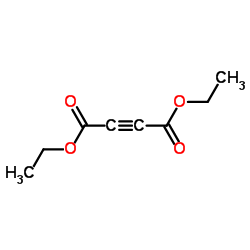Diels-Alder reactivity of polycyclic aromatic hydrocarbon bay regions: implications for metal-free growth of single-chirality carbon nanotubes.
Eric H Fort, Patrick M Donovan, Lawrence T Scott
Index: J. Am. Chem. Soc. 131(44) , 16006-7, (2009)
Full Text: HTML
Abstract
A soluble bisanthene derivative, 4,11-dimesitylbisanthene, has been synthesized in three steps from bianthrone. In hot toluene, this bisanthene undergoes a clean Diels-Alder reaction with diethyl acetylenedicarboxylate to give a rearomatized 1:1 cycloadduct and, more slowly, a rearomatized 2:1 cycloadduct. In a competition experiment with the shorter "periacene" perylene, only the bisanthene reacts, and the perylene remains unchanged. The experimental results stand in complete accord with density functional calculations (B3LYP/6-31G*), which predict that the activation energies for Diels-Alder cycloadditions in the bay regions of periacenes should diminish monotonically as the length of the molecule increases. This structure-activity relationship offers hope that single-chirality carbon nanotubes can be grown from suitable hydrocarbon templates, without metal catalysis, by a Diels-Alder cycloaddition/rearomatization strategy, using acetylene or a "masked acetylene" as the dienophile.
Related Compounds
| Structure | Name/CAS No. | Molecular Formula | Articles |
|---|---|---|---|
 |
diethylbut-2-indioat
CAS:762-21-0 |
C8H10O4 |
|
Enhanced toxicity of the protein cross-linkers divinyl sulfo...
2011-09-19 [Chem. Res. Toxicol. 24(9) , 1457-9, (2011)] |
|
3,4,5-Trisubstituted Furan-2(5H)-one Derivatives: Efficient ...
2015-09-01 [Drug Res. (Stuttg.) , (2014)] |
|
Synthesis of novel highly functionalized 4-thiazolidinone de...
2014-01-01 [Molecules 19(3) , 3068-83, (2014)] |
|
Synthesis of the anti-virus compound shuangkangsu's analogs.
2009-07-01 [J. Asian Nat. Prod. Res. 11(7) , 613-20, (2009)] |